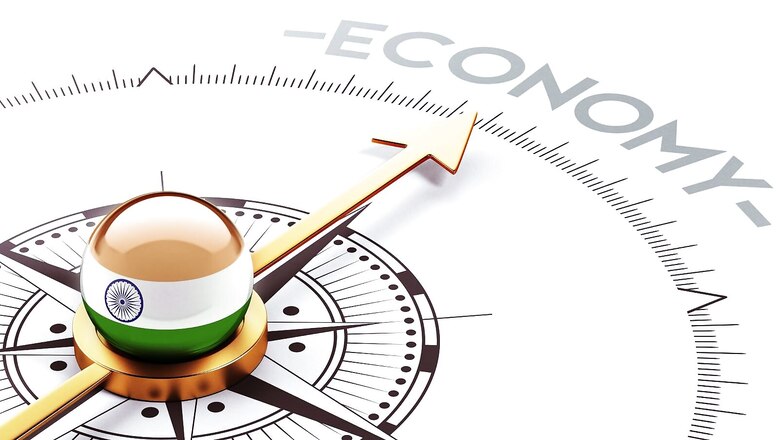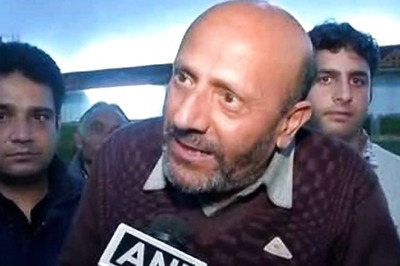
views
India is a unique country. It has a population north of 1.3 billion. India isn’t really a rich country in the purest sense of the word, or even a developed one for that matter. It’s a developing country with a lot of potential and a population that is extremely aspirational. Until recently, those aspirations found little to no expression, primarily because the heart of India — its villages — were left behind even as urban centres embraced digitisation. Not only were Indians in rural areas trailing on the digital front, they also remained unconnected to the country’s financial system. What’s worse, the pace of them getting hold of smartphones was unimpressive too.
When Narendra Modi came to power in 2014, a pathbreaking scheme aimed at financial inclusion turned things around for Indians. From 14.72 crore in March 2015, Jan Dhan accounts have now grown to 47.09 crore. That’s a three-fold increase and shows the scale at which India has been able to achieve financial inclusion of its most marginalised and economically weak sections of society. A majority of Jan-Dhan account holders, close to 56 per cent, are women. Almost all Indians today have an Aadhaar card, which means the government can easily identify them. All Jan Dhan account holders also have mobile phones, and internet penetration across India is now estimated to have reached 47 per cent.
Why the backstory, you’d ask? The International Monetary Fund, you see, has just lauded India. In fact, lauded would be a light word to use here. The IMF — by far the world’s most important financial institution — is in complete marvel of India and what the country has achieved. IMF’s deputy director for fiscal affairs has called India’s direct cash transfer (DBT) scheme and its JAM trinity a “logistical marvel” that has been able to help “hundreds of millions of people every day”.
IMF’s managing director Kristalina Georgieva went a step ahead and said India deserves to be called a bright spot in an otherwise dark horizon because it has been a fast-growing economy, even during difficult times. This growth, she said, was underpinned by structural reforms, which she said will go a long way in making India leave a mark on the world for the years to come.
The IMF also said the world has a lot to learn from India. IMF’s adulation of India’s direct benefit transfer system was not what made all the news. The financial body also restored India as the world’s fastest-growing economy for 2022 and 2023. In its annual ‘World Economic Outlook’ report, the International Monetary Fund said outlook for India is growth of 6.8 per cent in 2022 and 6.1 per cent in 2023.
India is the best performer, economically speaking, at a time when countries around the world are expected to fall into recession. To quote the IMF, it expects countries representing one third of the global economy to enter recession soon. The likes of Germany and Italy are almost certainly falling into recession, and many other major economies are in the danger zone as well. India faces no threats of recession. Instead, it continues to be the fastest-growing major economy.
The global economy is going through a very tough phase, and India’s overall performance will definitely be impacted by it. Had everything been normal in the global economy, India was well on the path of posting even higher growth numbers. The IMF also said that if India were to become a $10 trillion economy, it would need to undertake structural reforms.
The headline still remains this — India is weathering a global economic storm and still managing to remain the world’s fastest-growing economy. India’s policy in times of global economic stress remains driven by compassion for the country’s most vulnerable. Whether it be cash handouts and subsidies, free ration or capped energy prices, India has ensured that its common citizens — especially within the poorer sections and in the middle class — are shielded from inflation. Separately, while the Covid-19 crisis prompted the flow of capital out of India, the trend was quickly arrested and investment is now returning.
Also Read: As the West Paces Towards Recession, India’s Economy Stands Strong
India’s ability to directly transfer money into people’s accounts has particularly caught the attention of countries and financial institutions around the world. According to data provided by the government, since 2013, Rs 24.8 lakh crore has been transferred through Direct Benefit Transfer. In the financial year 2021-22 alone, Rs 6.3 lakh crore has been transferred, and the average of daily DBT payments ranges over the Rs 90-lakh mark.
The time for the world to learn from India is now. It is not easy to weather a global economic storm, and set examples while at it. India is doing both with ease due to the strength of its domestic demand, and also the government’s ability to maintain the country’s energy security. Early caps on energy price rises, sourcing fuel from suppliers who provide it at the lowest cost available and continuing to attract foreign investments is what has helped India maintain the confidence of various stakeholders.
Indian industries are functioning normally, unlike in Europe, where factories are shutting down due to lack of energy and soaring production costs. Despite intense global economic stress, India’s economy will go on to become the world’s third largest in the next six years. By 2028, India’s economy will be behind only those of the United States and China.
India needs to remain watchful, though. It does face the risk of getting its growth story soured by external factors if the war in Ukraine prolongs, energy prices soar beyond affordability and the rupee continues to take a beating, leading to the rapid depletion of the country’s forex reserves. If at all, the time for India to remain on high alert is now. Countries are looking up to India to learn lessons in tackling their own economies. This is also the time for the government to work towards making India an even more business-friendly destination to attract more investors and foreign manufacturers.
India also cannot let its guard down on the social front. There will be elements that will try to hijack the trajectory India is on. Such elements need to be nipped in the bud swiftly, before they become too much of a headache. This is not the time for India to get its growth story compromised. All eyes are on India, and every step the government takes needs to be measured and thought abundantly through. The chances of India’s neighbouring competitor trying to derail the country’s growth is now higher than ever, which is why New Delhi must guard against foreign sabotage attempts at all times.
Major economies, meanwhile, can sit up straight and begin taking notes from India on how to confront the sea of economic challenges faced by them.
Read all the Latest Opinion News and Breaking News here



















Comments
0 comment